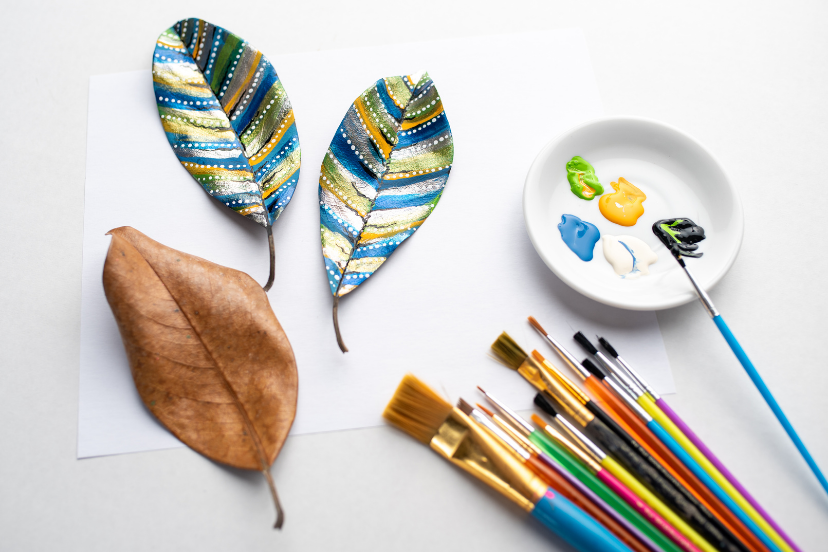Crafting with Natural Materials: Unleashing Creativity from Nature
In the world of crafting, there’s a delightful trend gaining momentum – Crafting with Natural Materials. This fascinating form of crafting leverages the beauty and versatility of nature’s bounty to create exquisite and eco-friendly masterpieces. It’s a creative journey that lets you infuse the essence of the outdoors into your art, connecting with nature in a tangible and artistic manner.
Crafting with Natural Materials: An Artistic Affair with Nature
Using natural materials is an art form that encapsulates the beauty of the outdoors in each creation. From pinecones to seashells, fallen leaves to driftwood, the natural world offers a plethora of materials waiting to be transformed into artistic marvels. Whether you’re a seasoned crafter or just starting, this article is your guide to exploring the wonders of using natural materials.
Why Craft with Natural Materials?
Crafting with natural materials isn’t just about creating beautiful pieces; it’s a sustainable and eco-conscious approach to art. Here’s why you should consider crafting with natural materials:
- Eco-Friendly Artistry: Utilizing materials from nature promotes sustainability and reduces the environmental impact associated with manufactured art supplies.
- Unique Aesthetic: Natural materials provide a distinct and charming aesthetic, each piece bearing the marks of nature’s craftsmanship.
- Connection with Nature: Crafting with natural materials allows you to immerse yourself in nature, fostering a deeper appreciation for the environment.
- Versatility: Nature offers an astonishing variety of materials suitable for a wide range of crafting projects.
Exploring a World of Possibilities: Types of Natural Materials for Crafting
Crafting with natural materials opens up a world of possibilities. Here are some popular types of natural materials you can use:
1. Wood: The Classic Medium
Wood, a timeless favorite, serves as an excellent canvas for a variety of crafting projects. From carved ornaments to rustic photo frames, the possibilities are endless.
2. Leaves and Flowers: Delicate Beauties
The delicate nature of leaves and flowers makes them perfect for crafting pressed art, decorative wreaths, or even unique greeting cards.
3. Shells: Nature’s Treasures
Seashells, abundant and diverse, can be transformed into jewelry, home décor, or intricate mosaic designs.
4. Pinecones: Earthy Elegance
Pinecones are versatile and can be turned into decorative pieces, centerpieces, or even fire starters.
5. Rocks and Pebbles: Solid Foundations
Smooth rocks and pebbles are ideal for painting, creating rock gardens, or as accents in various craft projects.
6. Driftwood: A Coastal Charm
Driftwood, shaped by its aquatic journey, can be crafted into stunning sculptures, wall art, or mobiles.
Crafting Magic: Tips for Working with Natural Materials
Using natural materials requires a gentle touch and an understanding of the materials at hand. Here are some tips to make your crafting experience enjoyable and successful:
- Inspect and Clean: Thoroughly inspect and clean the natural materials to remove any dirt, insects, or unwanted elements.
- Preserve and Seal: Apply a clear sealant to preserve the natural beauty and durability of the materials.
- Experiment and Innovate: Don’t be afraid to experiment with different techniques and combinations to achieve unique results.
- Combine Materials: Mix and match various natural materials to add depth and complexity to your creations.
- Enhance Naturally: Enhance the natural colors and textures of the materials using minimalistic approaches, such as oiling or polishing.
Crafting with Natural Materials FAQs
Here are some common questions enthusiasts have about crafting with natural materials:
1. Can I use freshly fallen leaves for crafting projects?
Yes, you can use freshly fallen leaves, but it’s best to press and dry them to prevent decay and enhance longevity in your projects.
2. How can I ensure my wooden crafts are insect-free?
To prevent insect infestations, consider baking the wood in the oven at a low temperature before using it in your projects.
3. Are there any safety considerations when crafting with shells?
Ensure the shells are properly cleaned and sanitized to eliminate any residual odors or bacteria.
4. How do I give a smooth finish to rough driftwood?
Sand the driftwood thoroughly to achieve a smoother finish before incorporating it into your crafting projects.
5. Can I color natural materials for crafting?
Yes, you can use eco-friendly dyes or natural pigments to color certain materials while maintaining their eco-friendliness.
6. Where can I find natural materials for crafting?
Natural materials can be found in your backyard, at the beach, or even in parks. Ensure you have the necessary permissions and adhere to local regulations.
Crafting with Natural Materials: A Harmonious Symphony of Art and Nature
In conclusion, using natural materials invites you to step into a world where creativity meets the gentle embrace of nature. Through this harmonious symphony of art and natural elements, you not only create stunning crafts but also contribute to a greener, more sustainable planet. So, gather your materials, let your creativity flow, and experience the joy of crafting with natural materials. Happy crafting!




